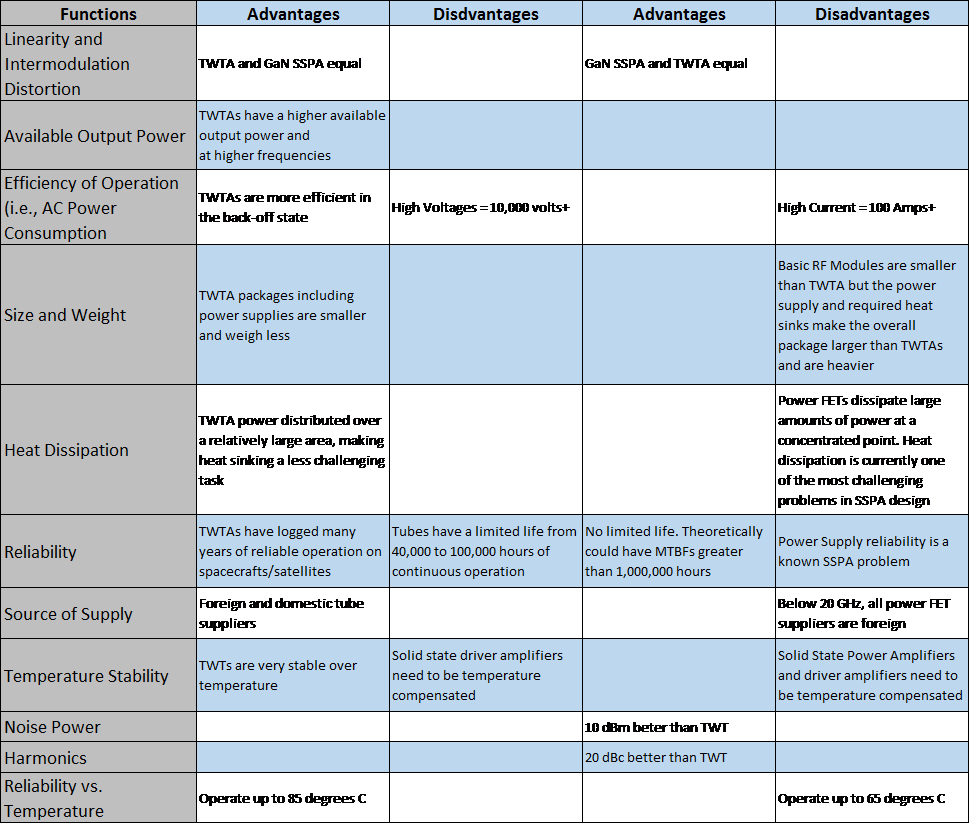What’s better: traveling wave tube amplifiers or solid state power amplifiers? The short answer is: it depends on the application.
Traveling wave tube amplifiers (TWTAs) sometimes catch a lot of flak because they’re considered “old technology.” Although they’ve been around a while, TWTAs carry on a legacy of power that is still relatively unmatched. Add new innovations into the design of TWTAs, and they’re often preferred for use in space for superior efficiency. Likewise, many modern unmanned aerial vehicles (UAVs) — such as General Atomics’ MQ-9 Reaper — use synthetic aperture radar (SAR) systems powered by TWTAs. And TWTAs are used on major airborne datalink, radar, EW and ECM applications.
That said, there are applications where solid state power amplifiers (SSPAs) have the advantage. For example, some wideband electronic countermeasures need the capabilities that SSPAs offer. We put together this handy guide to help you select the amplifier that best fits your application. If you need more insight into these pros and cons, let’s chat – please email info@dbcontrol.com.
TWTA vs. SSPA: Advantages and Disadvantages
All units have the same linearity, intermodulation and spectral regrowth performance.

A version of this post originally appeared here: https://www.dbcontrol.com/whats-better-twtas-sspas/


